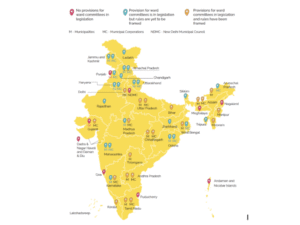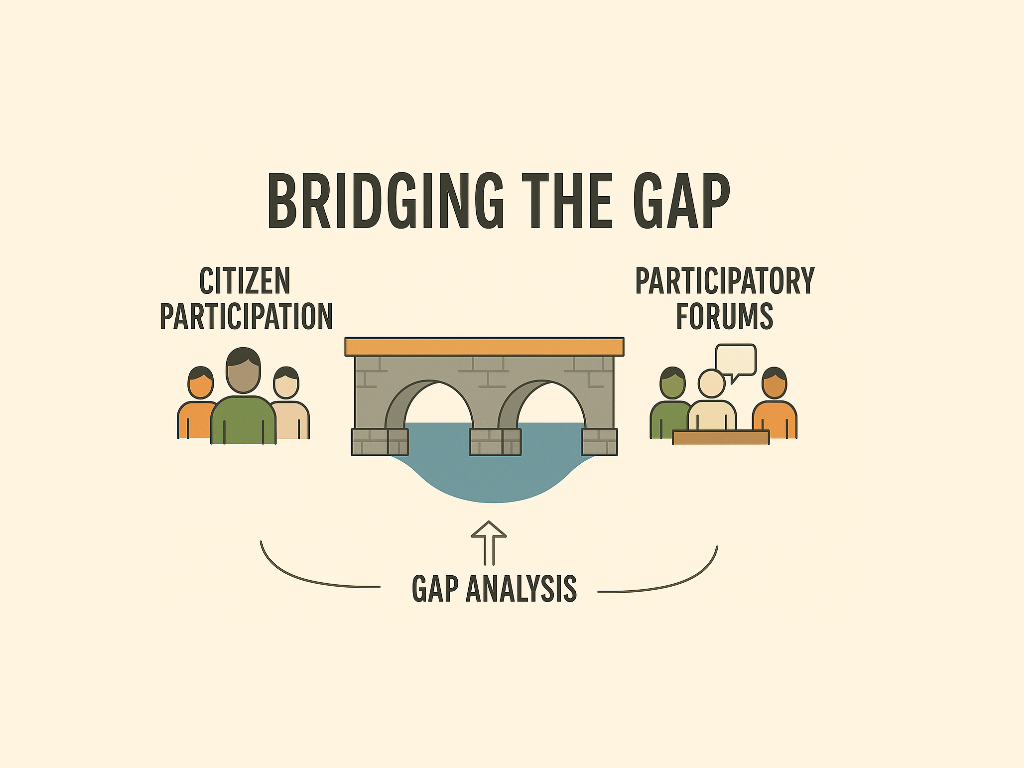The decentralisation of urban governance was envisioned in the 74th Constitutional Amendment Act (CAA) of 1993, marking a significant step toward citizen participation. One of its key priorities, Article 243S, called for the formation of Ward Committees (WCs) in all municipalities with a population of 3,00,000 or more.. These committees were intended to act as institutional platforms for participatory governance, with responsibilities such as preparing ward development plans, overseeing the implementation of schemes, and addressing matters of local interest.
To operationalise this mandate more effectively, the Community Participation Law (CPL) was introduced under the Jawaharlal Nehru National Urban Renewal Mission (JnNURM). It proposed a three-tier governance model – city governments, Ward Committees, and Area Sabhas – designed to institutionalise grassroots democracy in urban areas.
Yet more than three decades later, the promise of participatory governance remains largely unrealised.
A patchy landscape of participation:

Source: My City My Responsibility, A Handbook for Active Citizenship (2023); Janaagraha Centre for Citizenship and Democracy
Despite the progressive intent of the 74th CAA and CPL, the implementation of participatory platforms remains inconsistent across Indian cities. Many state municipal laws still lack clear provisions for these forums, and where laws do exist, effective operationalisation has been slow or symbolic.
As per Janaagraha’s Annual Survey of India’s City-Systems (ASICS) 2023, only five out of 35 states and Union Territories – Andhra Pradesh, Assam, Bihar, Mizoram, and Tamil Nadu – have enacted the CPL and notified corresponding rules for all city governments. Even more telling, just22% of Indian cities have functioning Ward Committees.
Among the 16 states that have notified rules for Ward Committees, only eight states report actual implementation. Some, like Arunachal Pradesh, Gujarat, Mizoram, Tamil Nadu, and Telangana report full activation. Others such as Assam, Kerala, and Madhya Pradesh indicate partial activation, with committees functioning in about half of their cities.These numbers reflect a persistent gap between policy and practice. Legal frameworks may exist, but administrative inertia, limited political will, and a lack of public awareness often stall their meaningful implementation.
Bridging the Gap
As part of my fellowship with Janaagraha, my work focuses on addressing how citizen participation actually plays out on the ground, through Ward Committees, Area Sabhas, and similar forums meant to embody the participatory spirit of the Constitution..
The study seeks to act as a bridge between the constitutional promise of participation and its fragmented practice on the ground. By identifying cities where these forums are functioning meaningfully, the study aims to uncover what makes participation effective, not in theory, but in everyday governance.
The aim isn’t just to highlight what’s working but also to understand why it’s working, and how those lessons might guide action elsewhere. Through this study, I hope to bring insights that others can build on, helping governments, practitioners, and civil society actors turn intent into implementation. Because participation is practice of inclusion, a pathway to accountability, and a chance to reimagine cities as spaces shaped with people, not just for them.


